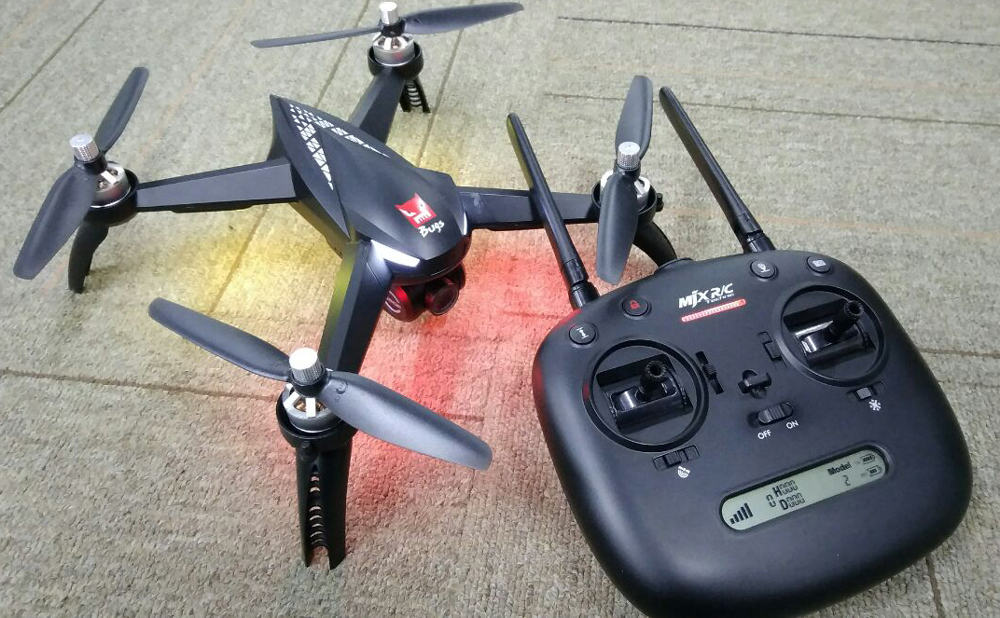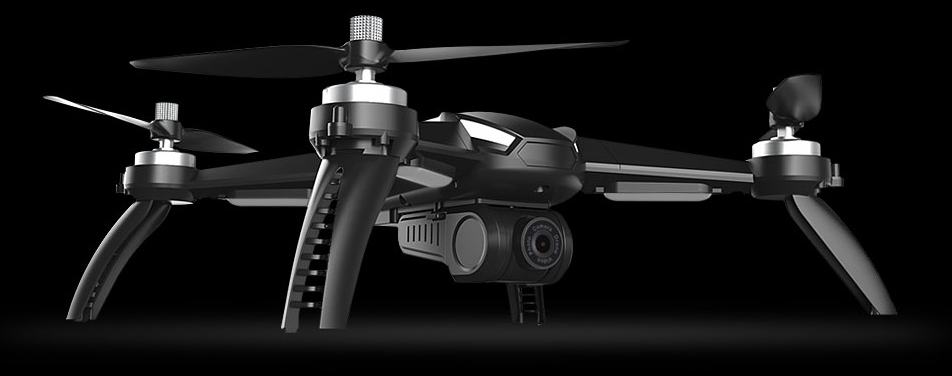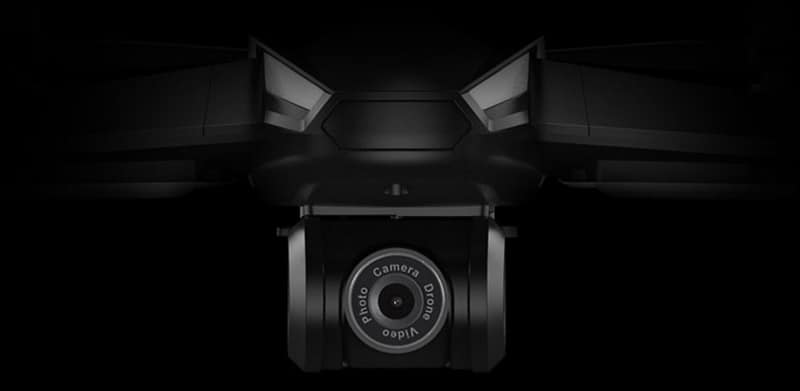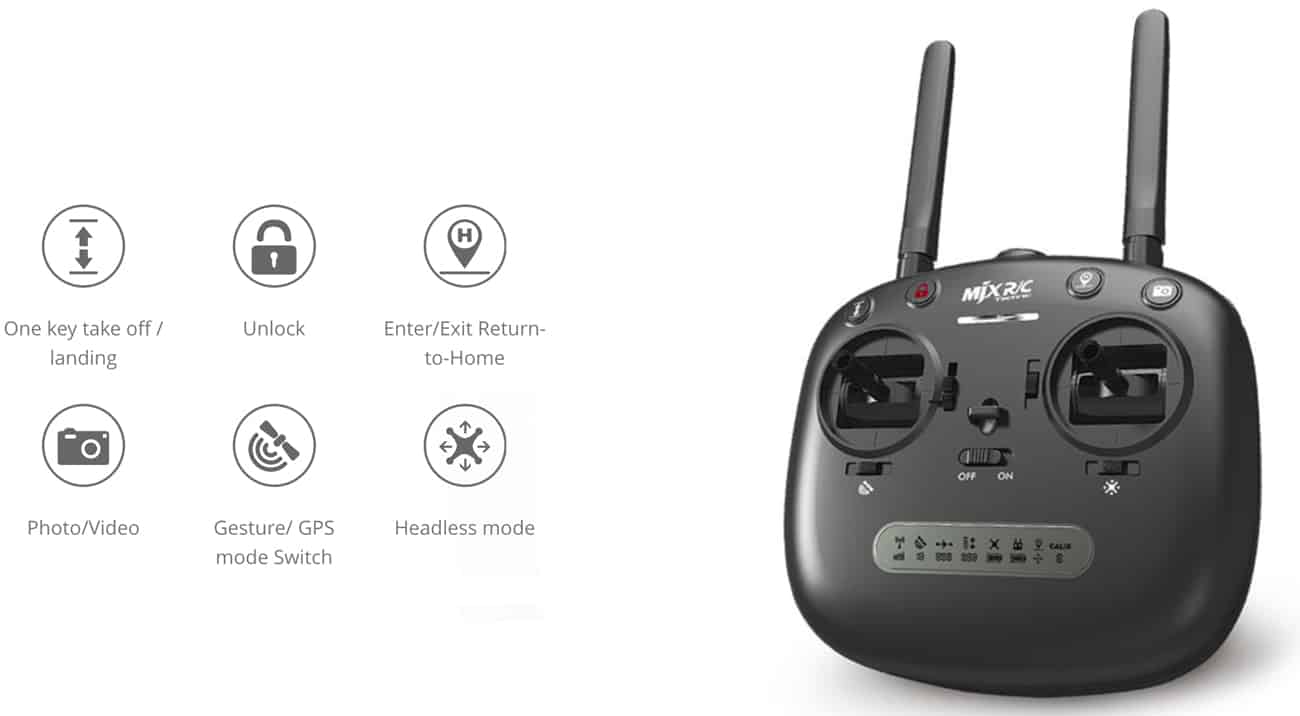MJX is the most active drone brand these days… and they are not planning on stopping with rolling out their new models anytime soon. After their Bugs 2 series received praises from the entire industry, the China-based giants are turning their focus into another direction.
Thus they unveiled MJX Bugs 3 Pro, a true successor to the massively popular MJX Bugs 3. With a wide array of extra features and unparalleled reliability, it is definitely going to be one of the best mid-tier drones this year.

MJX Bugs 5W Review
However, a big competitor will definitely be the newly announced Bugs 5W. This is a proper machine; as a matter of fact – it is probably the best camera drone MJX ever created! Similarly to B2W, this birdie has an awesome camera but takes things one step further with a special trick in its sleeve! So, without any further wait, let’s head on to the actual MJX Bugs 5W review!
MJX Bugs 5W – Quick Specifications
- Flight time: 15 min
- Flight range: 300-500m
- Camera: 1080p
- Sensors: barometer, accelerometer, 6-axis gyro
- Advanced features: GPS, altitude hold, RTH, mechanical gimbal
- Size: 350x350x90mm
- Weight:
- Battery: 7.4V 1800mAh proprietary LiPo
- Charging time: 240min
- Transmitter: dedicated physical transmitter
MJX Bugs 5W Review – Pros and Cons
The perfect mixture of its highly successful predecessors
Let’s start off with the obvious – MJX Bugs 5W is an absolutely charming drone. Thanks to those flashy bugs-like eyes in the front, sleek elevated landing legs, and the generally aggressive appearance, this drone really stands out from the crowd.
The build quality is spectacular, to say the least. Even though we are talking about a plastic-finish drone; it’s not that common cheap ass plastic we’ve come to expect from dirt cheap models. Nope! MJX Bugs 5W plastic is incredibly stiff and the entire construction feels sturdy even under excessive bending pressure. The same can be said about Bugs 2 series which raised a new high for the price tier as far as build quality is concerned.
Create professional-grade aerial videos with this hardware-stabilized camera

Videos are great too – 1080p at 30fps is absolutely splendid at this price point. And the best thing about this camera is the 1-axis mechanical gimbal it’s built into. This removes shakiness in your footage and allows you to adjust the camera angle straight from your transmitter.
We shouldn’t forget the fact that MJX Bugs 5W sports FPV as well. It’s the same 5G WiFi module like the one we’ve seen on 2W, capable of going up to 500 meters with certain smartphone models. One thing is for sure – FPV will definitely be a helping hand in terms of aerial photography you plan on doing.
Redesigned transmitter offers good operating range
If you are not exactly the biggest fan of the original transmitter that came with Bugs 3 and 2 series, then I have some good news for you! During our MJX Bugs 5W Review we found out that MJX have gone out of their way and completely redesigned their stock transmitter.
They are calling this beauty GR6221B (a rather boring name if you ask me) and it looks a lot nicer than its predecessor. This time around, the design is completely curved, resembling those sleek DJI transmitters in a way.
There are also 2 antennas now which means more range, right? Well, if the standard is Bugs 3 then yes… but if it’s Bugs 2w – then no! This transmitter/receiver combination is good for around 500 meters in unobstructed areas. 300 if you are living in an urban area with lots of interference and difficulties with optical vision.
Still, 500 meters, even though shorter than B2W, it is pretty good considering the rest of the market is having just fractions of it…
Good old proprietary battery still hasn’t lost its charm
A lot of people (including some of you currently reading this) won’t like the fact that this drone won’t work with 2S batteries you have laying around.
Nope – it features a proprietary plug along with a specialized battery compartment that nicely slides into the drone itself and locks in place. As for the actual battery, you are basically looking at the same 2S 1800mAh Lipo like the one we’ve seen with MJX Bugs 2W. It’s pretty powerful, mind you – we did all sorts of high-speed maneuvers with 2W which just goes to show you what’s this battery capable of !
In terms of flight time though, you will be looking at roughly 15 minutes which is a bit shorter than B2W (the lack of a mechanical gimbal does the trick) but still great for today’s standards.
3 types of RTH for the most reliable flying experience
Similarly to B2 and B3 Pro, B5W sports the same 3-factor RTH system that ensures drone’s reliability if you happen to lose line of sight or your battery goes to a critically low level. Here’s the summary so you’ll know what you are dealing with before you head out to the field and start testing this baby out:
Smart RTH

If you want to cancel this command at any time, simply press the RTH button again and you will regain full control over your drone. Also, you can control it while in RTH too. That way you can manually avoid any obstacles that might be in the drone’s way.
Failsafe RTH

Once the signal is recovered, you can simply press the dedicated RTH button and your drone will exit Failsafe RTH mode, thus you will regain full control over it.
Low Voltage RTH

Once the battery voltage is diminished, your transmitter will start beeping notifying you that Low Voltage RTH is soon to be turned on. Once the beeps start going quicker, your drone will enter Low Voltage RTH and start flying to its takeoff location.
GPS powered altitude hold
A lot of people love MJX Bugs 2W because of its great camera and its ability to keep flying at a constant altitude without having to manually adjust the throttle. 5W has GPS-powered altitude hold too, this time around with even greater precision. The more GPS connections, the better its hovering accuracy will be. This is bound to come in handy when trying to take that perfect selfie or a linear path aerial video.
MJX Bugs 5W sports a proper amount of power
It seems as though 5W and 2W share several exactly identical parts with the only real deal maker being the mechanical gimbal and vastly improved camera. It’s true – those are basically the 2 selling points to the majority of potential customers.
With that being said, MJX Bugs 5W runs on MT1806 1800Kv brushless motors known for their durability and power delivery… and what a surprise -MJX Bugs 2W runs on the same ones. That’s nothing bad, though – B2W is an exceptionally agile drone which will surely be passed onto this one.
Wrapping things up…
There is no point in talking about MJX Bugs 5W any further. We can all agree on one thing – it is a brilliant drone that’s going to be a major threat to others in its price tier. Best of all – it features a mechanical gimbal and that’s a feature not a single one of its competitors have to offer.
Combined with an extra dose of reliability (smart RTH functions) as well as a great full HD camera, there is no stopping this birdie from becoming one of the best drones under $300.
The post [Review] MJX Bugs 5W – MJX Unveils Their First Ever Hardware-Stabilized Camera Drone appeared first on DronesGlobe.com.



No comments:
Post a Comment